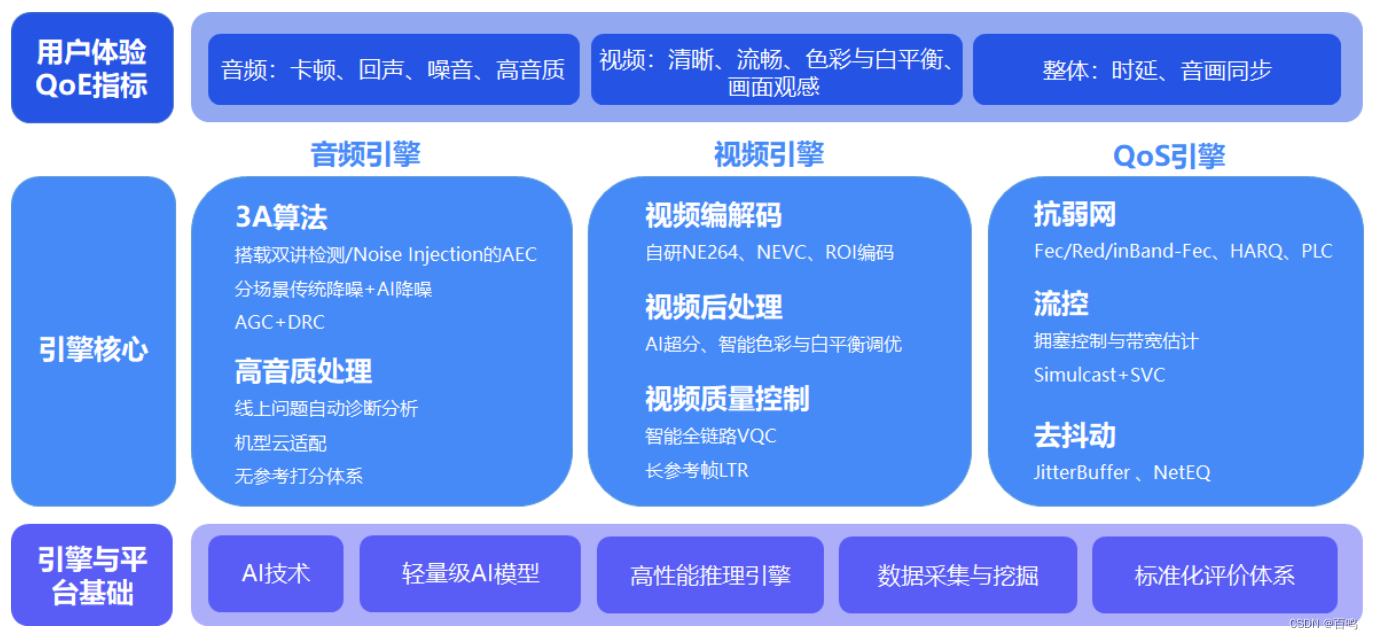Audio and video QoE indicators refer to a series of indicators for evaluating and optimizing the user experience of audio and video content. These indicators include the evaluation of video clarity, video fluency, and video delay, which are key indicators to measure the quality of audio and video services. In practical applications, QoE indicators are crucial to ensure user experience, so for audio and video service providers and equipment manufacturers, optimizing QoE indicators is crucial.
- video resolution
Video clarity refers to the level of detail in a video signal, usually measured in terms of pixel count or resolution. The higher the video resolution, the clearer and more delicate the video picture, and the better the user viewing experience. Therefore, improving video clarity is one of the keys to optimizing QoE indicators. Common methods include increasing video resolution, using higher-quality codecs, and optimizing video processing algorithms.
- Video fluency
Video fluency refers to the stuttering and picture stagnation that occur during video playback, and is usually measured by frame rate. The higher the video fluency, the smoother the video playback, and the better the user viewing experience. Therefore, improving video fluency is also an important factor in optimizing QoE indicators. Commonly used methods include optimizing network transmission quality, using more efficient codecs, optimizing video processing algorithms, etc.
- video delay
Video latency is the time, usually measured in milliseconds, that takes a video signal from transmission to display. The lower the video latency, the better the user viewing experience. Therefore, reducing video delay is also one of the keys to optimizing QoE indicators. Commonly used methods include optimizing network transmission quality, using more efficient codecs, optimizing video processing algorithms, etc.
In short, audio and video QoE indicators are crucial to ensuring user experience. By improving video clarity, video fluency and reducing video delay, etc., QoE indicators can be optimized, thereby improving user viewing experience. In practical applications, factors such as network transmission quality, codecs, and video processing algorithms need to be considered comprehensively to achieve the best QoE effect.
